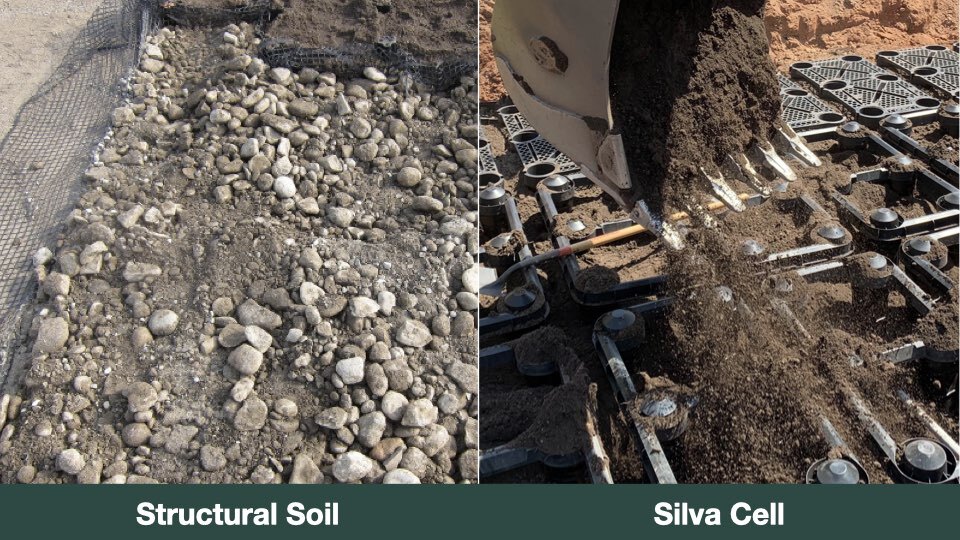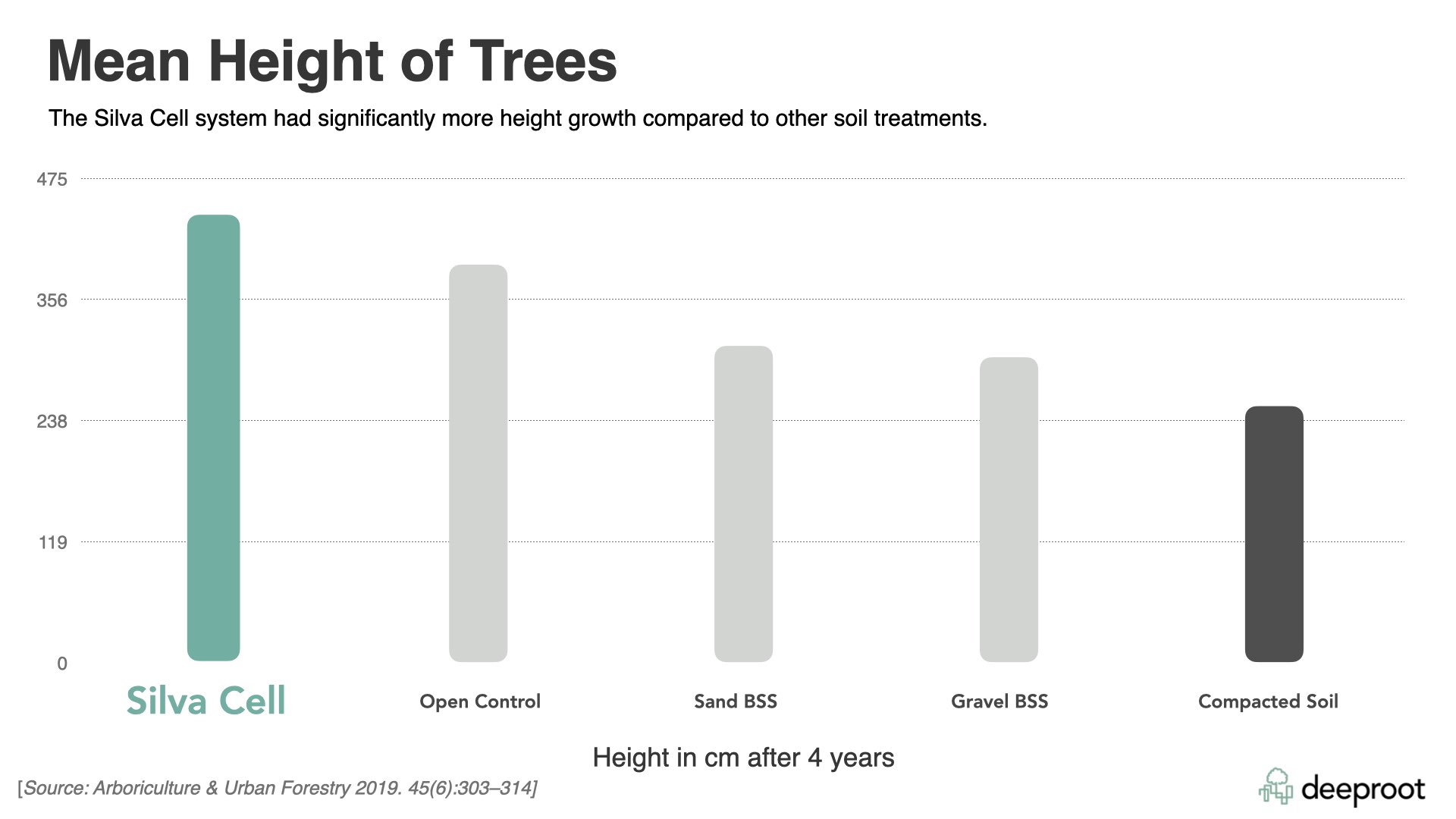Introduction
The space constraints of dense city environments present a challenge for project planners implementing an urban forestry element. There are, however, a number of solutions to help improve conditions for healthy tree growth. The Silva Cells are one such choice, a suspended-pavement system allowing for maximum soil volume. Another option is structural soil — but what exactly is structural soil? And more importantly, what are its limitations as a strategy for growing large urban trees?
What is Structural Soil?
Before we examine exactly what structural soil is, let’s begin by assessing the tree-growing conditions in tight urban environments that give rise to its necessity in the first place. Here’s DeepRoot’s Steve Chatwin-Grindey discussing how tree planting has evolved over the years:
Previously, and especially if you go to London, we’ve got London Plane [trees]. They’re 250 years old — and we plant a tree now and you’d be lucky if you get 18 years out of that tree, planted next to this enormous tree. And we get asked the question quite often: why is that? And I think we can contribute a lot of that down to compaction. They require compaction to build our footpaths and roads upon. And that compaction then pushes out the micropore and micropore space within the soil. That leaves the trees then struggling to get through this compacted subbase that we are then building roads and footpaths on.
Finding a solution that simultaneously provides optimal soil conditions for root growth and foundational support for various infrastructure and transportation needs, then, becomes paramount. In the early 1990s, building on work done in Europe in the previous few decades, Cornell University in tandem with AMEREQ patented the first structural soil (CU-Structural Soil), comprised of 80% crushed rock and 20% loam soil.

This rock-majority composition provided a supportive foundational base for roads and sidewalks, while also creating a soil environment into which city trees’ roots could grow. As DeepRoot’s friend and arboriculture/soil expert Jim Urban describes: “The mix is compacted to 95% Proctor Density. Crushed rock has approximately 30% void space and the soil fills these voids, remaining uncompacted with the compaction force and paving loads transferred through the rock matrix.”
There is, however, an important shortcoming to structural soil’s ability to grow large, healthy urban trees: soil volume.
Limitations versus Flexibility
One of the most decisive factors in the success or failure of a city tree is its access to soil volume: the more quality, uncompacted soil into which a tree’s roots can grow, the better its chances of flourishing to healthy maturity. The very composition of structural soil restricts this, particularly when comparing it to the Silva Cell system and its 92% void space (all of which can be filled with soil). As Chatwin-Grindey explains:
Sometimes from the outset it can seem like a relatively cheap alternative to the Silva Cell — but you’re not providing the soil that you are in the cells if you match that soil volume. So, it’s really important to understand: you need five times as much, at least by volume, to match the soil in the Silva Cell.
If only 20% of structural soil is actual growing media, the space for roots to expand and prosper quickly becomes restricted. In dollars spent per cubic foot of soil volume, there’s no comparison. As Jim Urban notes: “In environments where space and budgets are always limited, ability to deliver soil more efficiently creates a significant advantage for using Silva Cells.”

In a study of different soil media, Silva Cells grew significantly larger trees than those planted in sand-based structural soil (Sand BSS) or gravel-based structural soil (Gravel BSS).
Likewise, one of the chief benefits of Silva Cells is their ability to integrate a number of different soil compositions and still grow large city trees (as the system itself provides the structural foundation, freeing the soil of this burdensome task). This flexibility is advantageous in project planning and budgeting, as Chatwin-Grindey identifies:
Occasionally you’re on a site where you see that soil is being excavated to install the soil cells. And the frustration I have sometimes is that soil can be a really good soil for growing trees, and you can put it back in the Silva Cells. We don’t need to use a manufactured soil in the Silva Cells. Any type of soil can be placed in the system. So, it’s really important because we’re talking about the economics of spending more money now for planting trees and that is a really large aspect of it. The connection to good, healthy tree growth is the soil.
This soil flexibility is both economically and environmentally responsible, as Jim Urban underscores: “The ability to reuse locally available soil makes the system very sustainable.” A project’s carbon footprint is reduced when on-location soil is reutilized and trucked-in materials become limited or unnecessary.
Conclusion
Ultimately, while structural soil may seem like a clever, inexpensive option under paved environments, the goal of any urban forestry initiative should be to grow big, healthy trees — and the ability to do this in a structural soil environment is severely limited, given its very composition. Indeed, you need five times as much volume to match an otherwise uncompacted soil bank, due to structural soil’s finite (20%) loam soil content.






Leave Your Comment